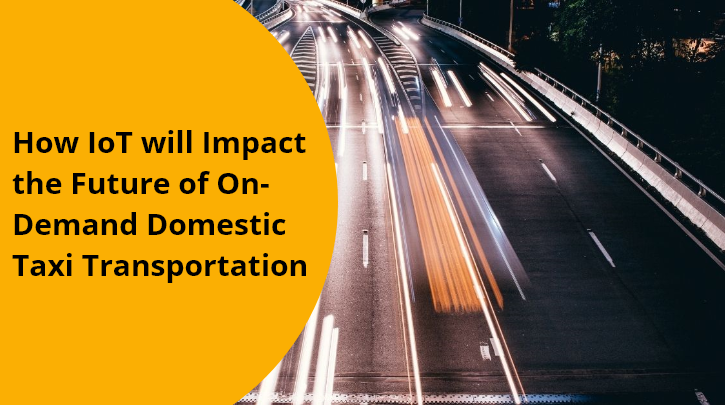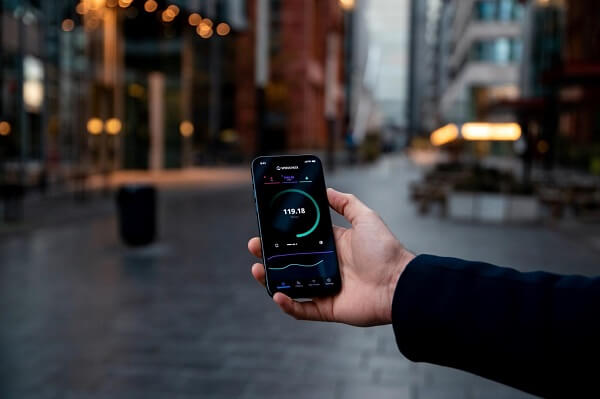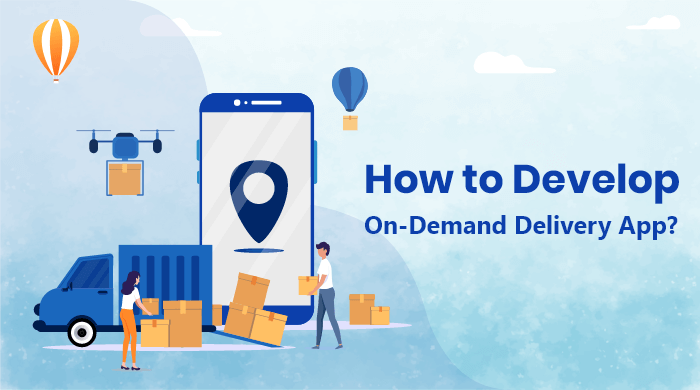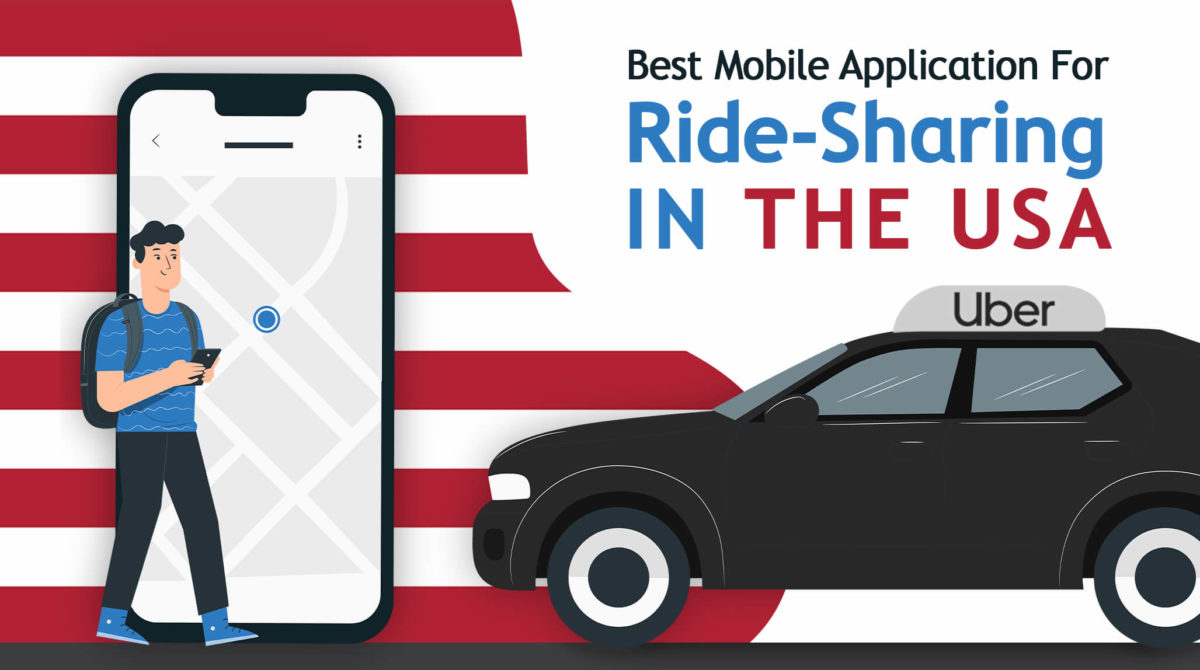
How IoT will Impact the Future of On-Demand Domestic Taxi Transportation?
Internet of Things (IoT) is already having a massive impact on businesses, government operations, and citizens. And now, even the transportation industry is untouched by it.
Indubitably saying, IoT is the future of transportation. For instance, the emergence of the autonomous vehicle is going to change the face of urban planning. However, some challenges are yet to be considered before it turns to reality Accidents, delays on roads, breakdowns, and many other issues arise while commuting. IOT development company will help commuters in tackling all these.
The utilization of IoT in an autonomous vehicle will enhance traveling your experience. It will offer a great advantage to the fleet management industry as well. In fact, the disruption is going to be at a big level because it helps in real-time decision-making. Along with that, improvement will be observed in the maintenance cost, fuel consumption, accident response, and so on.
To know more about the impact the future of IoT will have on on-demand domestic taxi transportation, continue reading this blog.
Impact of IoT on Taxi and Dispatch System
We have seen how UBER, OLA, and other ride-sharing apps have made the life of customers easier. They are offering ease of traveling, safety, and cost-effectiveness. That’s why passengers are using ride-sharing apps rather than booking a taxi. The latter arrives late in comparison to UBER or OLA, which further pushing traditional taxis backward. In this, many ride-sharing mobile app development company have contributed.

Now, it’s time for the taxi industry to adopt the latest technology to combat the ride-sharing wave. And this can be possible with the use of IoT. It connects all the commute processes on a centralized cloud network for collecting real-time information with a unified communication system. These can provide a great advantage in the management of a taxi business.
IoT connection in all vehicles connected to each other will develop a frictionless network. This will make it easier for the taxi owners to know the health of all the connected vehicles at once. Moreover, the apps will stay connected to the imaging satellite for tracking vehicle movements and receiving alerts for traffic jams. So, a fully equipped IOT facility in a taxi will assist drivers as well as passengers both.
Competing for the taxi industry won’t be easy as the top ride-sharing apps are there. But, the adoption of technology-driven solutions and IoT is enough for them to come back and rise again.
The unification of all the processes such as dispatch, communication, quick service response can be performed using IoT development company technology. It will also offer on-time pickups, updates on driver details, time, of arrival, and much more.
In terms of safety, taxi companies can connect passengers and drivers using one-on-one communication, licensed drivers, and call masking features.
No doubt, the future taxi dispatch system will come equipped with a fuel checking facility, tire pressure, and a lot of other factors using IoT. Eventually, the taxi service will help to deliver a better service and experience to the customers.
Real-time Access
Many times passengers have to face the consequences of late arrival and unnecessary stops by the drivers. This causes a lot of delay in reaching your place.

Apart from that, drivers who keep engines switched on for long causes wastage of fuel. For the passengers, this may not sound like an issue but for the business, both the stoppage and keeping the engine on will lead to extra costs.
Therefore, fleet owners have to behave smartly now by embedding high-quality sensors in the vehicles for gathering real-time data. As a result, the efficiency of the business will improve for the better. They can track the location of the vehicle and owner to catch red-handed and saving useless expenditure.
Besides, some drivers don’t follow the traffic rules and drive improperly. With the help of sensors equipped in vehicles, the owners can check driver’s behavior and get information about route adherence, braking practices, speed regulations, and so on. Therefore, IoT solutions need to be adopted at a big level and take account of real-time information to run day-to-day operations of fleet services without any hassle.
Handling of Data
Taxi firms are operating with several thousand cars meaning plenty of data is available to them. By having the data in their hand, they can use the IoT embedded intelligence system for easing traveling in crowded urban areas. This technology is going to change things for autonomous vehicles that are the future of the transport industry.
If taxi business owners want to survive in the competitive environment, there is a constant need for innovation and the adoption of disruptive technologies.
Aside from the benefits to the vehicle, the total information gathered through the cloud is required for OEMs too. They can use it for the fabrication of parts in autonomous vehicles for ensuring high security and connectivity.
The data is of broad assistance to urban city planners too for creating a better and advanced route and managing transport infrastructure.
Smarter Taxi Network
The taxi will become smarter and this point out the fact that IoT connection among dispatcher and cab will allow you to take the best route to your destiny. You will also save both time and energy.
Suppose you have to arrive airport at 9 PM, then check out whether the taxi is available or not. And if available, check when it will arrive and leave you at the airport. The onboard sensors will keep informing you about the scheduled arrival and departure time through a unified system.
Read Also- How to Build a Taxi Booking App Like UBER?
Connection to the wireless mode with your phone, you can even track the progress like how far you have traveled and what’s the remaining distance. In case there is a jam in a particular area, you can personalize your journey by choosing an alternative route to save your time.
Saving Maintenance Cost
We have already revealed that IoT can provide access to driver’s behavior and how you can get alerts for traffic jams. In addition to them, you will get alerts for battery low, engine maintenance, and many other insights helpful for saving money for the maintenance of fleets.
Fleet managers can monitor the above operational factors for accessing the mechanical issues and avoiding future problems. Further, fleet managers can protect their assets from damage using IoT solutions and providing better safety and customer satisfaction.
Controlling Environmental Impact
Connected trucks with IoT not only boost efficiency and productivity but also contribute towards reducing environmental impact.

By reducing fuel consumption and improving vehicle travel to its place faster by 68%, you can reduce carbon footprint with the rate of reduction in CO2 to up to 75% emissions.
You can also reduce the risk of injuries by staying connected to the cloud. Stronger connectivity will deliver enhanced vehicle efficiency of 15%.
Conclusion
According to some statistics, the global fleet industry may grow from $12.56 billion in 2014 to $35.35 billion in 2019. If your fleet management business has not adopted IoT yet, you may have to shut it down in the future. Hence, make sure to go with the trend and latest innovation coming into the market. Be prepared for the advancement and disruption that will be brought with the autonomous vehicle.
Want to upgrade your app with IoT technology? Then, you’re at the right destination. We are a Custom Mobile App development company with 13+ years of Experience holding our legacy within the hands of our expert app developers.









